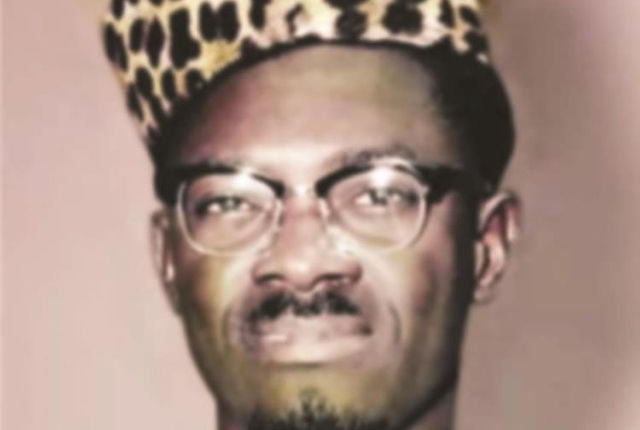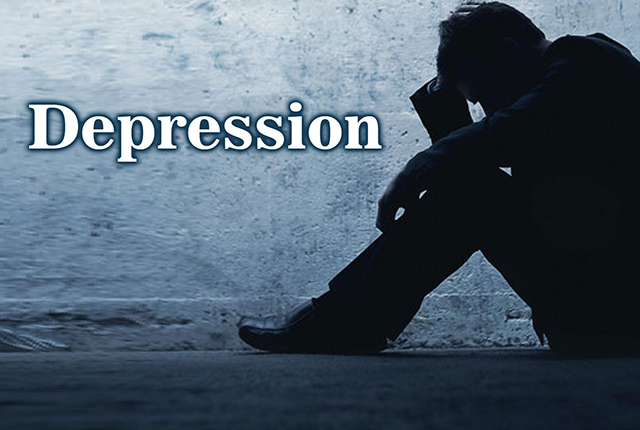Lumumba, Hammarskjöld and the Cold War in the Congo

Henning Melber Correspondent—
After Congolese independence in June 1960, Moïse Tshombe declared, with Belgian support, the secession of Katanga. At the request of President Kasavubu and Prime Minister Lumumba, the UN Security Council mandated Hammarskjöld to intervene. But the Cold War constellation turned this into a mission impossible.
Hammarskjöld was soon criticised by either the East or the West for almost every subsequent decision.
He tried to maintain ownership over the UN’s role by seeking the cooperation of as many states as possible from the non-aligned movement.
India’s Nehru, Egypt’s Nasser, Guinea’s Sekou Touré, Ghana’s Nkrumah and Tunisia’s Bourguiba, became important counterparts and at times even allies to bring a visible involvement of the South into the peacekeeping efforts.
Moroccan, Swedish and Irish blue helmets also strengthened the operations.
Appreciating Hammarskjöld’s intentions, African leaders sought first to influence Lumumba towards measured interaction with the UN and later refused support to the Soviet initiative campaigning for Hammarskjöld’s resignation.
When Lumumba was ousted as prime minister, Hammarskjöld was at pains to determine how the UN should respond. The Congo mission was tasked by a Security Council resolution to act in consultation with the constitutional government. But when President Kasavubu and Prime Minister Lumumba clashed in early September 1960, the question boiled down to who could claim legitimately to represent the government.
Hammarskjöld and his legal advisors concluded that the provisional constitution for the Congo, the Loi Fondamentale, allowed the chief of state (which was the president), under Article 22, to dismiss the prime minister and appoint a new one, if his action was endorsed by at least one minister, which had been the case.
But the situation on the ground was more complex and contradictory. Communication with competing Congolese parties was often confusing and negotiations remained inconclusive. Pressure was exerted through multiple Western interests, including the mining companies operating in Katanga and elsewhere in the sub-region.
Belgium, the United Kingdom and France (the latter two had turned against Hammarskjöld during the Suez Crisis of 1956), the USA, the British settler colonial minority regimes of the Central African Federation (Northern and Southern Rhodesia and Nyasaland) and apartheid South Africa, all had a massive geostrategic and economic interest to remain in control over the Congo generally, and Katanga specifically.
This collided with the opposing interests of the Soviet Union, which was keen to secure a stake in the resource-rich territory – or at least to prevent the West from establishing another satellite regime while ignoring the aspirations of African leaders for self-determination.
The result was an increasingly toxic situation on the ground. The secret services of all the major Western powers were operating side by side with mercenaries and Belgian troops. And the global contestation over the Congo was active even in the UN Secretariat itself. The “Congo Club”, comprising senior UN officials directly involved in the operations both in the Secretariat and on the ground, had an influential role in advising the Secretary-General. These individuals also had direct responsibilities in issuing and implementing directives.
These influential officials included most notably the US-Americans Ralph Bunche, who had served as an intelligence agent in the Office of Strategic Services, the WWII spy agency that preceded the CIA; and Andy Cordier, the Irishman, Conor Cruise O’Brien and the Indian Rajeshwar Dayal; as well as the first commander of the UN forces, the Swede von Horn (who had absolutely no grasp of the local realities).
The Congolese scholar Georges Nzongola-Ntalaja maintains that some of these UN officials “shared a common Cold War outlook with Western policy makers, and saw their mission in the Congo as that of preserving the then existing balance of forces in the world”. As he argues, some members of the Congo Club “wittingly or unwittingly” might have “provided to those seeking Lumumba’s demise the justification and the opportunities they needed to remove a democratically elected leader from office by illegal means”.
It is worth remarking that Ralph Bunche’s interaction with Patrice Lumumba highlights a mismatch due mainly to clashes in their personal chemistry, suspicion on both sides and miscommunication.
This escalated into a relationship characterised by animosity and mutual contempt.
As ridiculous as it may sound, the exchanges between the African-American Bunche, the first Black Nobel laureate, and the Pan-African nationalist Lumumba were riven with strong racist undertones.
The American scholar Crawford Young diagnosed their interaction as a “fatal encounter” in as much as “the flow of information that shaped their understandings was so completely at odds that one might imagine that they were engaged in wholly separate settings”.
At the end, this was certainly a contributing factor to the ghastly fate of Lumumba, whose life ended on 17 January 1961.
It remains a matter of controversy to what extent the UN should have protected Lumumba after he decided to leave the house in which he stayed under UN observation.
As Hammarskjöld and others argued, by removing himself from the direct protection in order to mobilise for the restoration of his political influence, Lumumba was returning into active Congolese politics.
His continued protection would therefore have been interfering in domestic policies and would have resulted in a violation of the mandate.
In the meantime it is a well-established and documented fact, that in the absence of such protection the USAmerican intelligence services played a major role in his liquidation under horrific circumstances.
Belgian journalist Ludo de Witte, perhaps the most vociferous critic of the UN and specifically, Hammarskjöld’s role in Lumumba’s assassination, charges that the UN and its Secretary-General were accomplices in the gruesome act. In the preface to the English edition of his exhaustive investigation, “The Assassination of Lumumba”, De Witte maintains that without the UN, Lumumba’s “assassination could never have been carried out”.
The critical review of the English edition of his book in the New York Review of Books by Brian Urquhart, who was also among the high-ranking UN officials surrounding Hammarskjöld, sparked an illuminating exchange. De Witte repeated his accusation that “UN Secretary-General Hammarskjöld played a decisive role in the overthrow of the Congolese government of Patrice Lumumba”, thereby willingly or not, becoming complicit in his subsequent assassination.
For him, the “UN was the most important vehicle of destroying the Congolese government and laying the groundwork for the dictatorship of Mobutu”.
De Witte regards Western criticism of aspects of the UN operation as being merely “for public consumption, or a counterweight to the Afro-Asian pressure on the UN leadership to help Lumumba”.
In response, Urquhart qualified De Witte’s “elaborate fantasy of Hammarskjöld’s conspiracy with the Belgians” as “absurd to anyone who worked with Hammarskjöld at the time and experienced his frustration and his frequent rages at, and denunciations of, both the Belgians and their protégé, the Katangese leader, Moïse Tshombe”
Hammarskjöld’s private comment on the brutal assassination might be telling. On February 28 1961 in a letter to his friend, the novelist John Steinbeck, he wrote: “No one, in the long pull, will really profit from Lumumba’s death, least of all those outside the Congo who now strain to do so but should one day confront a reckoning with truth and decency.”
On the day eight months after Lumumba’s execution, Dag Hammarskjöld and 15 others (entourage and crew), died in the wreckage of the DC6 airplane Albertina. It crashed when approaching the airport of the Northern Rhodesian mining town of Ndola in the night from September 17 to 18 1961. Officially considered the result of a pilot error, evidence ever since then nourished suspicions that the plane crashed because of external influence.
Testimonies of numerous credible local eyewitnesses were deliberately ignored. As the German scholar Manuel Fröhlich commented: “It is interesting to note that almost all of the major secret services in the world are at least suspects in one or another theory. In retrospect, Hammarskjöld’s death becomes singular evidence of the Secretary-General’s independence.”
Since the publication of “Who Killed Hammarskjold?”, the pioneering book by Susan Williams in 2011 (now re-published in a second edition), this private inquiry into the death of the Swedish UN Secretary-General impelled the UN to re-open further investigations, which had been dormant since the mid-1960s.
On December 6 2016, the UN General Assembly adopted a resolution to pursue investigations into Hammarskjold’s death. It was, remarkably, the third resolution since 2013. During the hearings at the UN, Sweden’s UN Ambassador, Olof Skoog, stressed the “shared responsibility to pursue the full truth in this matter” while “the need for additional follow-up remains”.
Skoog also told the General Assembly: “Time is of the essence as with every passing year the door is closing further on finding the truth. But our efforts must continue. We owe it to the families of those that perished that night, to the UN as an organisation and to all here who strive to continue to work in Mr Hammarskjöld’s spirit.”
Numerous other states have co-sponsored this and the two preceding resolutions, which remarkably include Belgium, France and Russia, all of which featured prominently in the 1960s crisis. It is worth noting, however, that neither the UK nor the USA have so far shown any willingness to provide relevant information in their possession or any other form of support and collaboration to investigate matters further. We know why and how Patrice Lumumba was killed. But the circumstances of Dag Hammarskjöld’s death remain contentious.
Hammarskjöld was on his way to Ndola to meet Tshombe to negotiate an end to the Katangese secession. Western diplomats on the ground cabled back to their home offices increasingly worried assessments, speculating about the plans of the Secretary-General. Two military efforts by the UN shortly before had backfired dismally, when in late August and early September UN troops failed to solve the impasse by force of arms in the operations “Rumpunch” and “Morthor”. These were in clear violation of the original mandate and infuriated the Western powers.
It is a matter of interpretation if Hammarskjöld, who was clearly taken by surprise of Operation Rumpunch (initiated, unauthorised, by O’Brien), endorsed the second military operation.
On September 10 1961 he cabled to his close assistant Sture Linnér that, “the speed of developments and the stage reached means that short of a change for the better in Katanga we are beyond the point of no return”. The military interventions could be seen as a sacrifice of Western economic interests in return for Soviet support of a negotiated end to the impasse. The strong disapproval of the Western powers was conveyed to Hammarskjöld. Dismissing criticism by the USA, he cabled on September 15 1961 to Bunche: “It is better for the UN to lose the support of the US because it is faithful to law and principles than to survive as an agent whose activities are geared to political purposes never avowed or laid down by the major organs of the UN.”
As late as a day before the fateful flight to Ndola he stressed in a cable to Tshombe: “The solution of the problem of the Congo lies in the hands of the Congolese people themselves without any interference from outside.”
This was of course more wishful thinking – more an appeal to a principle than a realistic assessment. Both the assassination of Patrice Lumumba and the loss of his own life and that of 15 others on board of the plane, as well as the killing of numerous civilians and soldiers on all sides of the conflict – including blue helmets – testified to a costly mission that bordered on the impossible. But while Hammarskjöld and the UN failed to end the conflict, they managed to prevent a further escalation into what might have provoked a much larger inter-state military conflict at the height of the Cold War. – New African magazine










Comments